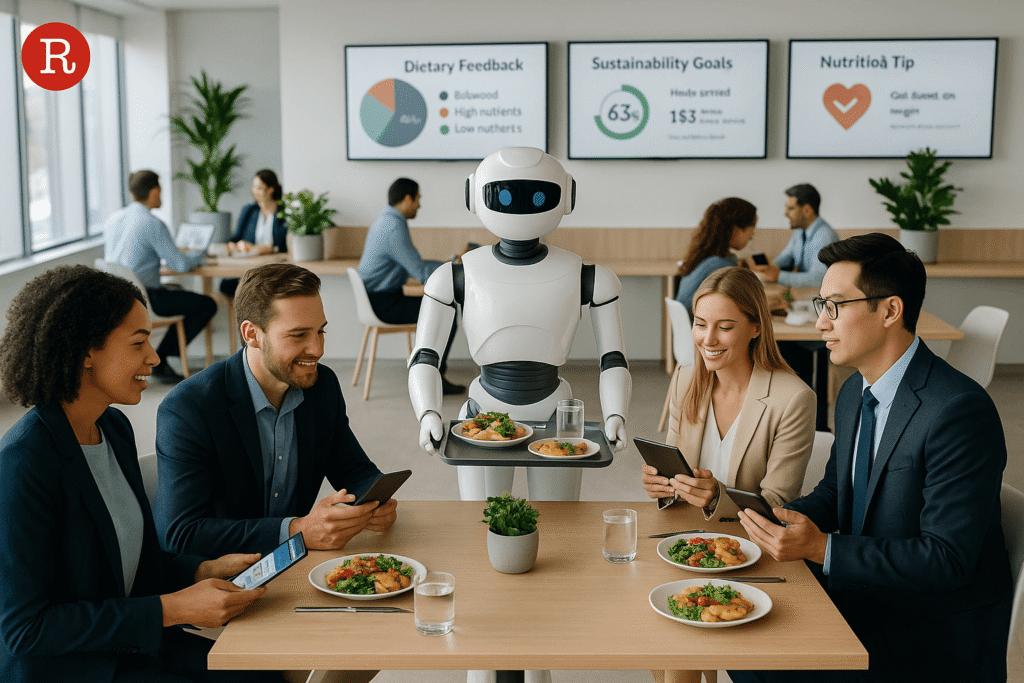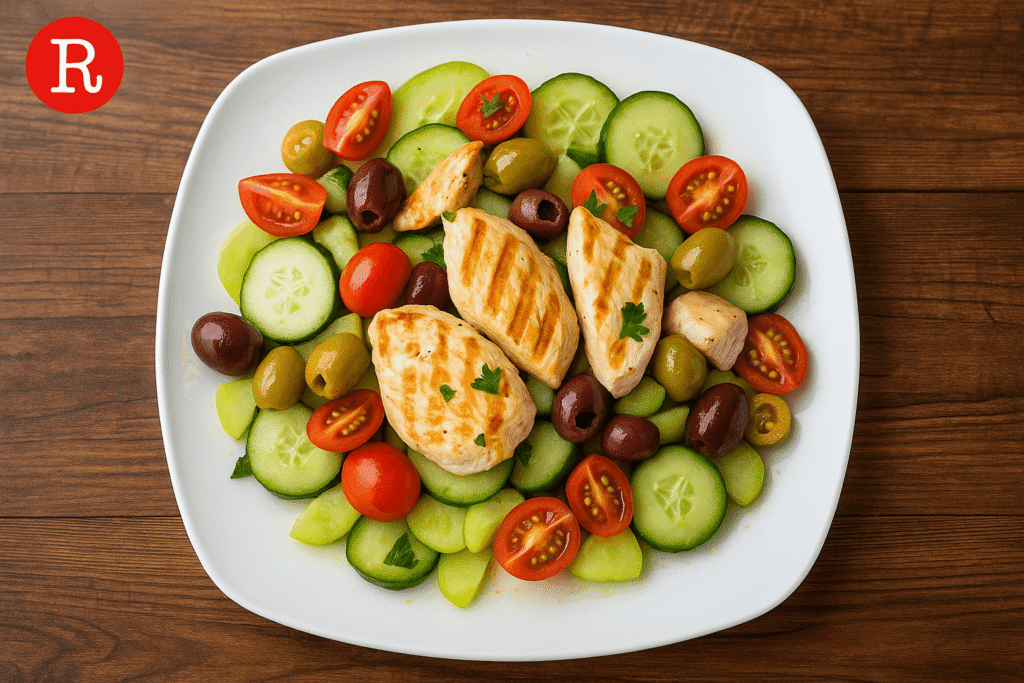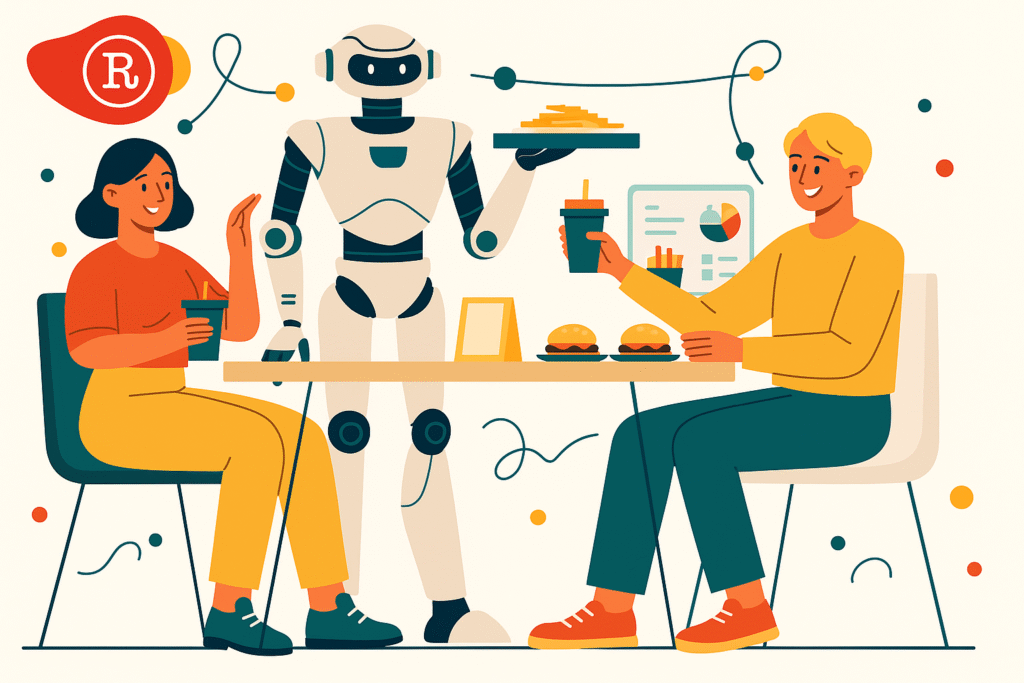Cafeterias at companies are doing far more in 2025 than just serving food. They’re serving better choices, healthier results, and real savings.
AI-powered menu personalization is one of the most effective applications of this possibility. It’s revamping the way companies think about how they feed their employees, by offering personalized food options that foster health, cut down on waste and boost satisfaction all around.
It makes employees feel understood knowing their dietary needs, taste preferences, and health goals are all taken into account. That personal touch drives them to choose the cafeteria over takeout and keep coming back. And here’s the little secret: customized menus are also a win-win for caterers, helping them save money by keeping overproduction and food waste to a minimum.
This post delves into how AI menu personalization works, why it’s important, and how companies today can utilise the feature to power smarter, healthier, and more efficient food programs for their teams.
What Is AI Menu Personalization and Why It Matters
AI-powered menu personalization is powered by clever software that takes note of each worker’s preferences not just the dishes they enjoy, but those they steer clear of, and those that align with their health-related goals. Think of it as a digital nutritionist-meets-chef, whose algorithm sorts through recipes and recommends meals for you to make based on visual cues: your preferences, your dietary restrictions, and your cooking ability.
Here’s how it works: Employees fill out a little basic info (maybe allergies, dietary choices, or goals “more protein,” “less sugar”). Over time, the AI follows your habits, it learns what meals you choose or skip or rate highly, and it makes adjustments to its future suggestions. The result? Custom menus that will bubble up on their phones, kiosks or a screen when they are ready to order.
In a corporate catering situation, it is an alternative to a typical one-size-fits-all buffet line. Rather than all 200 employees queuing for the same three or four dishes, each sees the meal that is relevant to him or her most, and portion sizes, ingredients, and even pricing, can be adapted accordingly.
This approach leads to:
- Increased involvement (more individuals utilize the cafeteria regularly)
- Reduced food waste (meals prepared according to actual demand)
- Healthy decisions (meal selections to sustain health)
For employers and food service companies, it’s a win-win: happier employees and smarter operations. For an age in which well-being and workplace perks are increasingly important, AI-powered food personalization might just be the secret sauce that makes certain companies stand out from the rest.
The Rise of AI in Corporate Catering

Business catering is getting smarter and tastier with artificial intelligence. No longer do we have to wonder what people want to eat, or throw out trays of uneaten food. With AI, companies can predict preferences, deliver better health outcomes and make dining more enjoyable for their employees.
Rather than mass-producing one-size-fits-all meals, AI takes into account employee habits, dietary restrictions, and even cravings over time. That means each and every lunch service gets more accurate and more satisfying. Catering as a service for those who actually need it a thing that once seemed mired in waste and guesswork, when so many of us went hungry because we were feeding the leftovers of a previous meal.
How AI Transforms Traditional Catering
AI assists food teams in making data-driven adjustments to menus. It uses information like:
- Allergies and special diets: Allowing our A.I. The team to take the reins here really saves a lot of time and stress in the long run, with sticking to those who are gluten free, dairy free, or vegetarian.
- Preferences for culture or cuisine: Employees who favor vegetarian Indian or low-carb Mediterranean food are shown meals that suit.
- Previous selections and feedback: AI customizes meals based on real food that people eat and like.
These data points contribute to feedback loops in real time. If one dish receives bad reviews or low adoption, AI learns quickly to adjust what’s offered on the next go. If something is a hit, we push it out. It’s this continuous learning that keeps menus fresh and exciting.
Stats on AI Adoption in Food Services
The figures certainly argue in favor of AI for catering. As detailed in the 2024 Food Tech Report by IBM:
- AI is now being used by 48% of corporate caterers, well up from 12% in 2020.
- The implementation of AI systems is associated with a 30–40% decrease in food waste.
- Employee food satisfaction improved by 58% due to more personalized service.
These findings suggest that not only does AI serve good food, but it also serves smarter choices. Wellness, savings and employee experience are now not only for companies that have AI-driven catering. It’s lunch time in the future.
Top Benefits of Personalized Menus for Your Canteen

Customized menus enable caterers to serve precisely what people want — and make the lunch hour a more enjoyable and efficient experience. What this means in a nutshell is more meal orders, less wasted food, and even improved employee wellness. Here’s how personalized AI menus can make all the difference.
Boost Footfall & Engagement
One of the greatest strengths of personalized menus is that they increase the number of people who are ordering meals. By personalizing menus to suit the palate, preferences and health profile of every employee, caterers can increase the number of orders for meals by 35 – 50%. Personalized messages, such as “Your top salad pick is back today,” motivate employees to try dishes that they love or haven’t seen for a while. These nudges transform probably-a-casual-visitor into a regular, and the canteen into a destination.
Slash Food Waste & Operating Costs
AI also keeps track of food waste, which is a big problem in corporate catering. AI predicts the number of servings for each dish by utilizing past order data. This is an excellent way for caterers to eliminate waste and stop overproducing food. Research has found predictive analytics to reduce overproduction by approximately 40%. For chains with several locations, that would mean thousands of dollars in savings on food and operating expenses each year.
Enhance Employee Well-Being
Healthy, well-balanced meals do wonders for employee well-being. With individualized menus, you can help direct your employees toward healthier choices that are appropriate for diets such as the Mediterranean, low-carb, and vegetarian. When there is better food, there is happier and more productive food, and people eat better — they take fewer sick days, as much as 25% less, and tell us the quality of the food improves their focus and mood. All of which makes for a happier and therefore more efficient and effective workforce, according to Athley.
How It Works From Data Collection to Menu
AI-enabled menus might sound like sorcery, but it’s just clever data usage. These systems aggregate the useful information, develop an understanding of our eating habits and dish out meal suggestions tailored to us that feel almost as if the menu can read our thoughts. Some even sync with health apps to recommend meals that promote energy, support health goals and align with diet needs.
Let’s unpack how the process works.
Building Employee Profiles
It all begins with building a comprehensive profile for every worker. The AI platform aggregates data from a range of sources, such as HR systems, point-of-sale (POS) history, and health tracking apps. This includes:
- Allergies and special diet needs (i.e. lactose-free, nut allergies)
- Health goals (e.g. low-carb, weight loss or energy foods)
- What do you like to eat, and what is your busiest lunch hour
- Past orders from the canteen or catering system
All that information is brought together into a single intelligent profile that updates automatically.
The Recommendation Engine
After the profiles are created, the AI’s recommendation engine takes over. It employs two technologies:
- Collaborative filtering, examining what similar individuals like.
- Content-based filtering, which examines ingredients and the type of dish.
As people order and give feedback, the system learns what they like and gets better at making recommendations for the future. And over time, the recommendations get smarter and more accurate, helping users discover new favorites they’ll love.
Seamless Integration & Rollout
One of the best parts? AI catering tools can integrate with all major systems. No matter if it’s your POS system, HR software or employee wellness apps, the integration process is fast, at most two weeks. To minimize disruption, many companies begin with a phased pilot involving one department or location. As soon as the system proves its worth, it can be expanded with ease into other regions.
Implementation Best Practices for Smooth Adoption
You don’t have to be stressed out about rolling out AI in your canteen. Here are some suggestions to make the transition easier on all involved.
Align Stakeholders Early
Before you start, gather crucial departments like Catering, HR and Procurement. Kickoff workshops ensure that everyone’s on the same page, whether their goal is to pare down food waste, improve engagement or provide healthier options.
Pilot & Iterate
Start small. Conduct a 4-week pilot in one location. Track important data such as:
- Number of meals ordered
- Amount of leftover food
- Employee feedback
Use the information to tweak the system so it’s ready to roll out company wide.
Training & Support
Smart tech aside, your team matters. Ensure that catering employees have easy-to-use dashboards and clear instructions at hand. The weekly reports are intended to give them a look at what is working. And thanks to a personal account manager, help is never more than a phone call away.
How to Overcome the Common Challenges
Even when you have great tools, there are some challenges. Here’s how to beat them.
Data Privacy & Compliance
Your AI menu solution will need to comply with rigid data legislation, such as GDPR and Natasha’s Law. Seek out software that provides robust data security, such as:
- Encrypted data
- Anonymized profiles
- Clear audit logs
This protects users and shows that you take privacy seriously.
Integration Roadblocks
Worried about your older systems? Most AI platforms have flexible APIs and built-in connectors. And even if your current configuration is custom-built or outdated, most integrations can be completed in days, not months.
Winning Over Staff
Change can be hard. Employ friendly messaging such as posters in the cafeteria, email updates and short in-app tips to demonstrate just how easy and fun personalized meals can be. Want to boost excitement? Give early adopters a “first meal free” coupon.
Conclusion: The Future of Personalization in Catering
In the near future, voice ordering and chatbot assistants will enable employees to talk or text when they want lunch simply. AI will also help experiment with variations of menus (a strategy known as A/B testing) to see which version works best.
All of this will take place behind the scenes, no day-of hassle for chefs or managers. Personalization in foodservice is not a trend, it’s a revolution. And it’s making workplace dining smarter, healthier and happier for all.

